In alignment with the Water Resources Agency’s strategy for Runoff Allocation and Outflow Control, and to promote a public-private partnership approach within comprehensive urban planning, the Taipei City Government aims to increase the city's rainwater retention capacity from 78.8 mm/h to 88.8 mm/h. To this end, the Hydraulic Engineering Office (HEO) has completed several key projects, including the Jinrui Flood Management Park Detention Basin, the Wenshan Sports Center Underground Detention Basin, and the Wenshan Military Police Camp Underground Detention Basin, all of which have contributed to enhancing the city's stormwater resilience. However, due to the city’s near-saturation urban development, existing flood control infrastructure—though gradually expanded or improved—remains insufficient in addressing the increasing volume of runoff caused by climate change. Given the difficulty in significantly upgrading current facilities, a multi-pronged strategy encompassing engineering solutions, system operations, and regulatory adjustments is essential to enhance flood resilience. As part of the sponge city initiative, efforts are being directed toward developing small to medium-sized detention basins.
HEO identified 21 decommissioned pedestrian underpasses, sealed at the entrances but still possessing vacant underground space, previously under the jurisdiction of the Public Works Department's New Construction Office. Given their proximity to historically flood-prone areas, these underpasses present an opportunity to be repurposed as subterranean storage basins to mitigate flood risks during heavy rainfall. This led to the initiation of a comprehensive review.
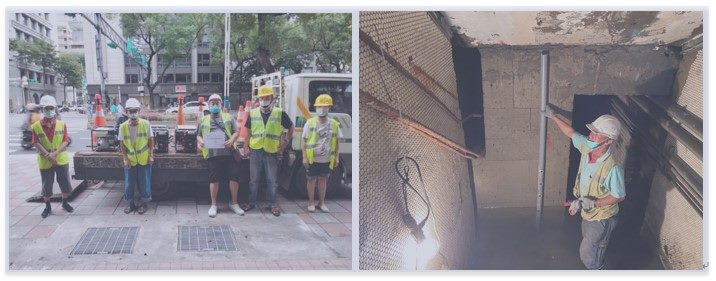
Through the “2019 Planning and Design Review for Flood-Prone Areas in Taipei City,” HEO evaluated the feasibility of converting four pedestrian underpasses (Zhongshan-Minsheng, Zhongshan-Jinzhou, Zhongshan-Minquan, and Dunhua-Nanjing) into stormwater storage facilities. After considering their positions near watershed outlets and their spatial characteristics, Zhongshan-Jinzhou and Dunhua-Nanjing were selected for implementation due to their potential flood mitigation benefits. In 2020, overflow facilities were completed. Subsequently, the Zhongshan-Jinzhou detention basin was completed on June 17, 2021, and the Dunhua-Nanjing facility’s permanent pump installation was finalized on September 5, 2021.

Zhongshan-Jinzhou Pedestrian Underpass:
Located at the intersection of Section 2, Zhongshan North Road and Jinxi Street/Jinzhou Street in Zhongshan District, adjacent to a linear park between Minquan West Road and Shuanglian MRT stations. The west side borders Jinxi Street in Jiying Borough, while the east side borders Jinzhou Street in Heng’an and Juye Boroughs. Nearby historically flood-prone areas include the intersections of Chengde Road and Jinxi Street near Chengyuan High School, Lane 102 of Minquan West Road near Shuanglian Elementary School, and Lane 24, Section 3 of Chengde Road near Datong Elementary School.
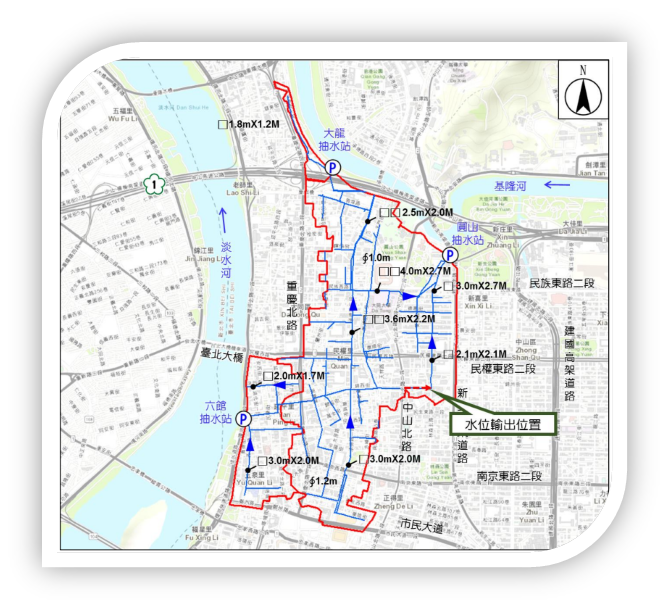
Dunhua-Nanjing Pedestrian Underpass:
Located at the intersection of Dunhua North Road and Sections 3 and 4 of Nanjing East Road in Songshan District, near Taipei Arena. The west side borders Section 3 of Nanjing East Road in Zhongzheng Borough, while the east side borders Section 4 in Zhonghua and Meiren Boroughs. Historically flood-prone areas include low-lying sections on both sides of Dunhua North Road, especially near Lane 100, Alley 155 of Dunhua North Road in Zhonghua Borough, and Lane 256 of Section 3 of Nanjing East Road and Qingcheng Street in Zhongzheng Borough.
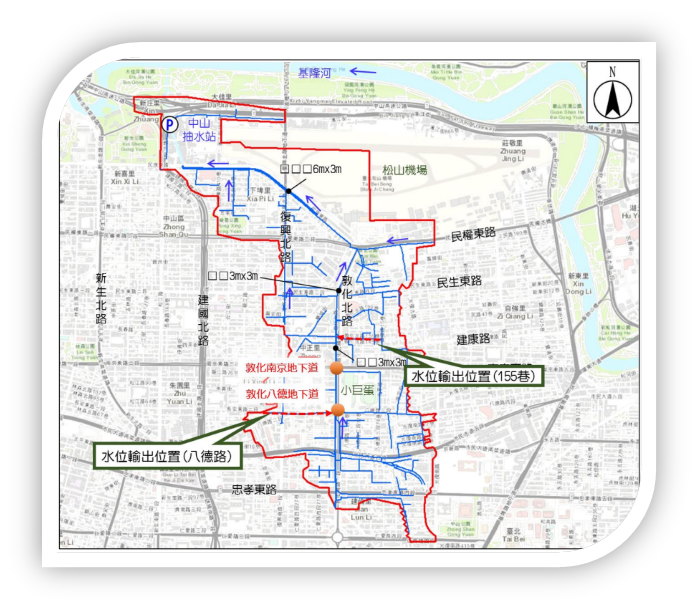
Utility Line Obstacles and Drainage Inflow/Outflow:
Pedestrian underpasses are situated beneath busy intersections, with original entrances near sidewalks. Due to location and capacity constraints within watershed areas, some underpasses offered limited effectiveness when considered for conversion. Moreover, utility congestion impeded the construction of inflow and outflow systems. In the past, multiple test excavations were required to determine viable routing.
Fortunately, with the establishment of the Road Excavation Administration Center under the Public Works Department, HEO now uses the Center’s 3D utility mapping system to identify utility locations and coordinate with utility providers, significantly reducing investigation and negotiation time. Existing stormwater inlet structures were retrofitted into overflow inlets, and pump sump pits were integrated into the abandoned underpass structures. PVC piping was chosen for ease of installation, connection to nearby drainage systems, and future maintenance access.
Pumping System and Energy Efficiency:
Given the elevation limitations of underground spaces, water retained in the detention basins must be pumped out during non-peak hours. This requires consideration of persistent water accumulation and operating costs. Pumping strategies were devised based on the number of sumps and backflow risks. For instance, Zhongshan-Jinzhou has only one sump with minimal backflow, allowing for a fixed stop-level mechanism. In contrast, Dunhua-Nanjing has three sumps, allowing staggered stop levels and alternating pump operation. This approach supports dynamic adjustment to minimize energy consumption.
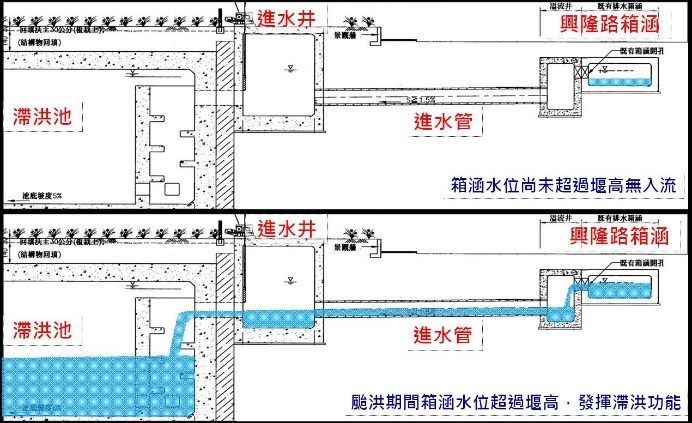
Change in Facility Use:
Previously managed by the New Construction Office and intended for pedestrian passage, these underpasses now serve solely as flood detention facilities, no longer accessible to the public. Given the change in function, HEO has drafted a Standard Maintenance Procedure (SMP) to ensure structural safety and reliable pump operation during routine inspections, minimizing risk and ensuring equipment integrity.
Repurposing Idle Infrastructure:
HEO has completed four detention basins to date, significantly improving rainwater tolerance in Taipei. However, as land availability is limited due to dense urban development, and constructing new detention spaces is increasingly difficult, repurposing idle or abandoned infrastructure into flood control facilities is a viable and cost-effective strategy to manage short-duration, high-intensity rainfall during typhoon seasons.
Automated Monitoring:
Rainfall and stormwater water level data have been integrated into HEO’s Water Information Monitoring System, supporting both manual and automated pump station operation. The newly installed pumps in converted underpasses function as micro pump stations, linked to the centralized monitoring system for remote control. This enables early activation at the onset of heavy rainfall, enhancing operational efficiency.
Rapid Enhancement of Flood Resilience:
The “sponge city” concept envisions urban spaces that, like sponges, can absorb and recover from environmental and climatic shocks. While sponge city development does not require solely large-scale infrastructure, this project demonstrates that by converting idle pedestrian underpasses into retention basins, flood resilience can be quickly improved. With minimal land acquisition, cost, and planning duration, such retrofits provide an efficient solution to mitigate flood risks during extreme weather events.

1. Constructing a new detention basin in a densely built urban area with a storage capacity equivalent to that of the Zhongshan-Jinzhou pedestrian underpass (718.4 cubic meters) would require an estimated NT$16.66 million in construction costs. If land acquisition is necessary, and assuming a basin depth of 4 meters, the required surface area would be approximately 179.6 square meters. Based on the announced current land value of NT$991,703 per square meter for Parcel No. 201, Subsection 2, Zhongshan Section, Zhongshan District, Taipei City, the estimated land cost alone would amount to approximately NT$178.1 million.
2. When including the Dunhua-Nanjing pedestrian underpass, the total storage volume of the converted facilities reaches 4,586.4 cubic meters (718.4 + 3,868 cubic meters), with total construction costs estimated at approximately NT$106.4 million.
3. A cost comparison indicates that constructing new retention basins is significantly more expensive than repurposing existing pedestrian underpasses. This project effectively demonstrates a substantial reduction in land acquisition costs.
4. Revitalizing and reusing abandoned facilities reduces the maintenance and operation costs otherwise incurred for idle infrastructure.
This project received the Honorable Mention in the Innovation Award category of the 2022 Taipei City Government Creative Proposal Competition.
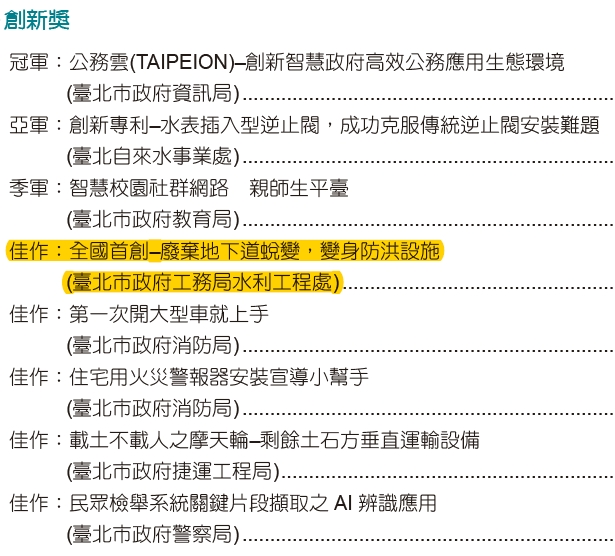
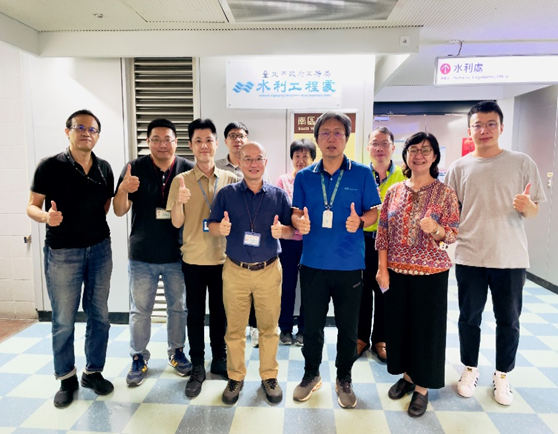
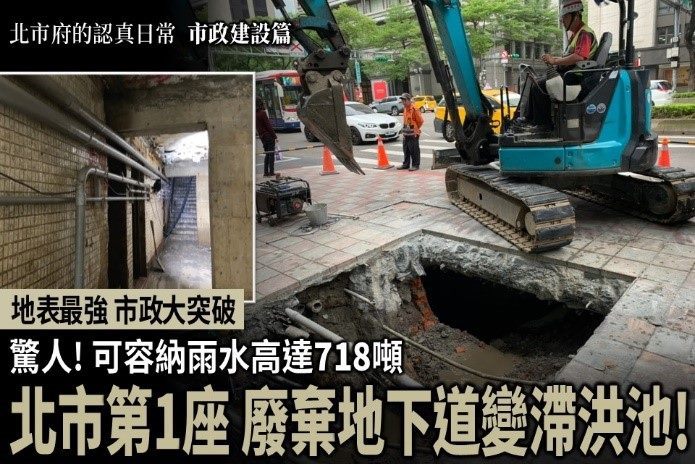

![Taiwan.gov.tw [ open a new window]](/images/egov.png)
